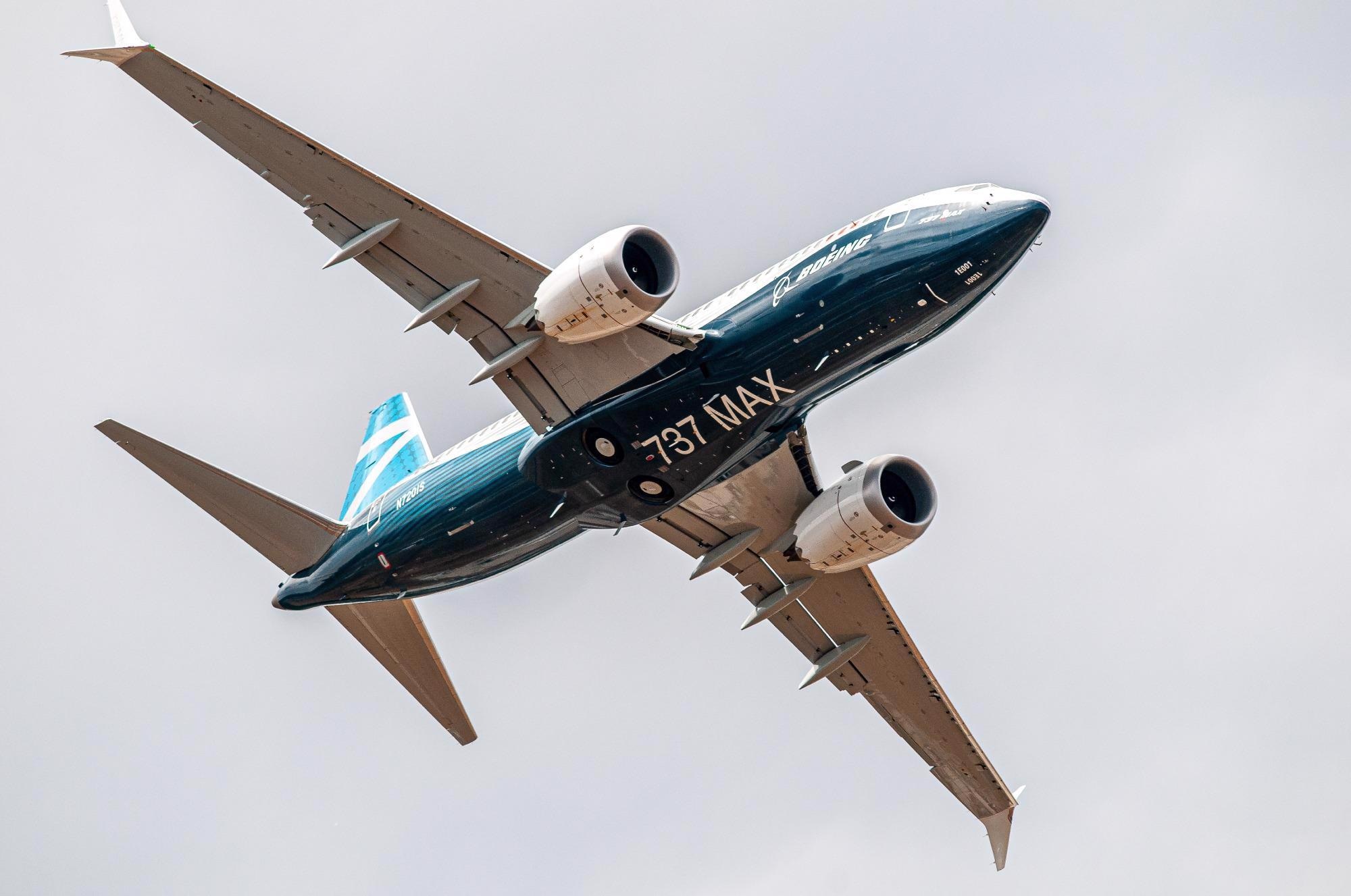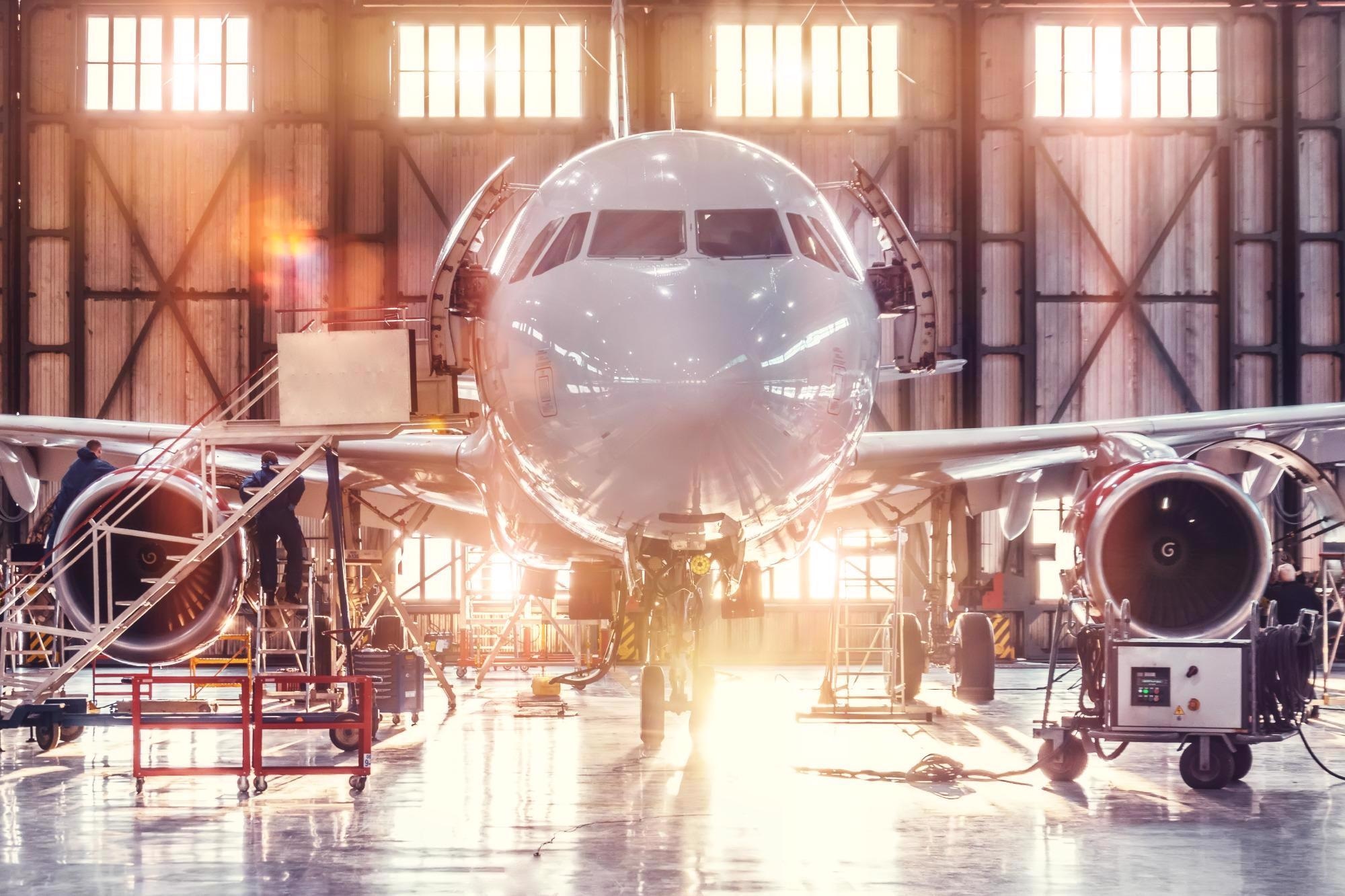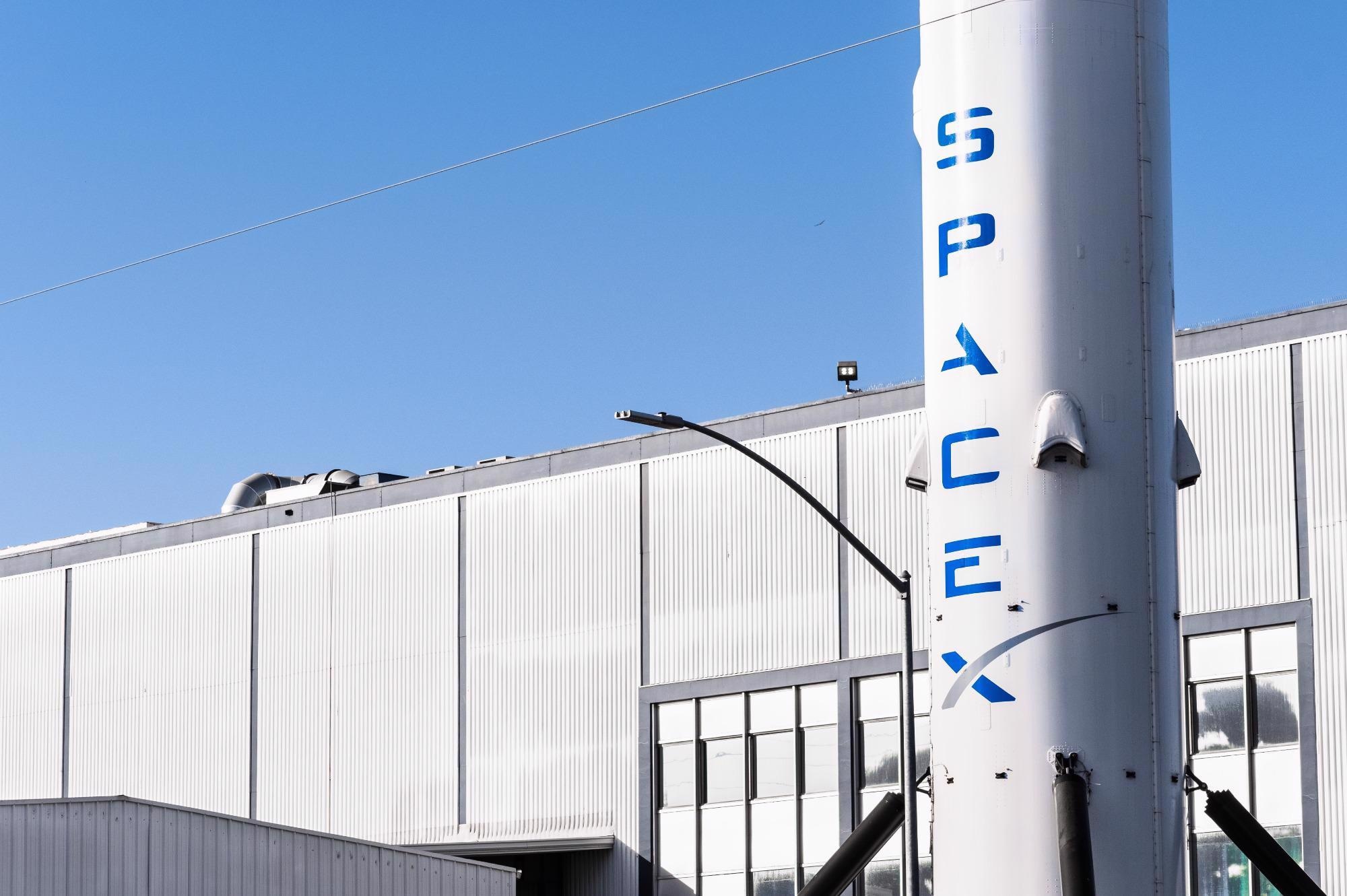Looking ahead to 2022, do you envision demand reaching pre-pandemic levels throughout the aerospace market?
We fully expect the commercial aerospace market to return to pre-pandemic levels at some point. The question, of course, is when? We know that at the worst of last year, global traffic was down about 80%. Today, global daily departures are back to about 70% of pre-pandemic levels, so we're only down by about 30% globally.
The US is only off by about 7% of pre-pandemic levels. On the other hand, China is still down about 50%, and Europe is down about 30%.
We had anticipated entering a strong comeback period for Europe, particularly with their winter travel season; this new COVID 19 variant has created some uncertainty for cross-border air travel. This is challenging to Europe's recovery.
On the other hand, there's a lot to be excited about in the market right now. The business jet market continues to perform well, and it has stayed strong even throughout the pandemic.
The 737 MAX has been grounded in China for safety issues and it was recently given the green light to start flying again. This is meaningful for that market and for Boeing.
With all that being said, we do expect the market to recover, but we expect this recovery to be lumpy because we don't know how some of these things will play out. We hope that by 2023 or 2024, we will be fully recovered to pre-pandemic passenger demand levels.

Image Credits: Shutterstock.com/WirestockCreators
There are rumors about production rate increases in the aerospace market. Do you believe that those projections are going to come true?
This is a hot topic of discussion right now. What we do know is that the airframers - Airbus and Boeing - are calling for some pretty aggressive rate increases, but the engine makers aren't necessarily on board. Companies like Safran have been very vocal in pushing back on some of the projections from Airbus, so it is difficult to know where the truth lies.
Airbus is calling for production rates of around 75 per month by 2025, which is about double where they stand today in terms of production output. It is hard to say if this is viable.
We do know that the market is recovering, and we do know that Airbus is well-positioned to capture some of that market, but there is also speculation that they are sharing these lofty goals as a way to put pressure on Boeing, which has fallen solidly back into second place after the two companies maintained a near 50-50 duopoly for a long time.
Build rates are most certainly increasing and this will create both challenges and opportunities for the supply base. Here at Technetics, we're more than prepared to ramp up, but where we actually end up in terms of true output is still to be determined.
What does all of this mean for the supply base, particularly around the uncertainty linked to that situation?
There are many reasons to be concerned about what this all means for the supply base. The aerospace and defense supply chain is already stressed, and certainly, increasing production rates will create more stress and strain there.
Kevin Michaels from Aerodynamic Advisory recently reported in Aviation Week that skilled labor has emerged as the main supply chain challenge.
We know that there were major layoffs throughout the industry in 2020 and a lot of suppliers in the aerospace and defense supply chain are having a difficult time recalling some of those employees to be able to expand capacity.
I've heard it said that within the supply chain, the workforce is about 10% to 20% smaller than what it should be to support current demand, as well as some of the near-term ramp.
One pressing question is, “Why are we having such a hard time maintaining and growing the workforce?” There are a few hypotheses circulating. One is that younger people are finding opportunities in other industries where they can get competitive wages, so perhaps their interest in aerospace has declined.
The other challenge is vaccine mandates which vary from state to state and company to company.
If we look at key aerospace cities, such as Wichita, Phoenix, Fort Worth, Savannah, and Charleston, these cities have a lot of key suppliers, but these are also places where vaccine levels are somewhere in the 40% to 50% range.
These cities are seeing mass resignations due to vaccine mandates, and this is challenging for a supply base that is already struggling.
The last thing I would note in terms of challenges for the supply base is a shortage of key inputs. Castings and forgings were a problem before the pandemic. Now we are hearing about chemicals and adhesives being in short supply, and everybody is well aware of the semiconductor and chip shortage.
Companies with labor issues also have material input issues, and if we add these issues to that increasing production rate, it is definitely going to create stress within the supply base.
It is a concern from a commercial aerospace standpoint and also for the defense complex, which relies on the same supply chain to support the workforce. This is something that is getting a lot of attention right now.
What are some of the other trends that you see within the aerospace and defense supply base?
There is certainly a lot of reshaping occurring within the supply base. For instance, the idea of large conglomerates had been in vogue for a long time, and as we are seeing now, that is no longer the case. GE has announced that they are going to split the company up into smaller groups, and we suspect that this trend is going to continue.
As a supplier, we are seeing a lot more interest from our customers in dual sourcing as one way of mitigating against the continuity of supply concerns. This is also another way to potentially drive costs down.
In my career, I've seen that pendulum swing from a single source strategy to a dual-source strategy every few years. In my experience, that dual-source strategy may appear attractive to supply chain organizations, but it doesn't typically deliver the kind of benefits that OEMs and tier ones anticipate.

Image Credits: Shutterstock.com/aapsky
What do you see in terms of mergers and acquisitions within the aerospace and defense landscapes?
In 2021, we saw a lot of defense-related transactions. There is an old adage that defense is defensive. What this means is that defense-oriented companies typically perform well through market downturns, and that has certainly been the case during the pandemic.
The commercial aerospace sector took a big hit, but defense stayed fairly stable. This prompted a lot of acquirers to become more interested in defense-related assets and businesses than they were before the pandemic.
What we are seeing now is a lot of liquidity in the market, and a lot of dollars chasing very few deals. Valuations have continued to increase, so businesses are trading in multiples that are significantly higher than they were just a few years ago.
Looking forward, we expect to see more commercial aero deal flow, particularly next year. There are a lot of businesses that weren't performing well over the past year and perhaps they had been interested in selling but certainly weren't in a position to do so.
These businesses pulled back, battened down the hatches, and kept operating the business. Now they are at a point where business is looking healthy, and balance sheets look good. We expect some of those businesses will be coming to market.
Going back to my earlier comment about conglomerates no longer being the flavor of the month, we expect to see more portfolio reshaping, divestitures, and carve-outs as companies continue to either split up assets or shed their non-core assets.
That should create opportunities within the commercial aero sector and should increase deal flow in 2022.
How has 2021 been for Technetics itself, and how do you foresee 2022 being for the company in the wider market?
2021 was a good year for Technetics and Enpro. We feel good about the state of our business and our ability to support the market recovery. I think in terms of our work in the broader aerospace and defense market, there are certainly some reasons to be concerned about key suppliers within the supply base. These issues are getting a lot of attention at different levels of industry and government.
Hopefully, this will all pan out, and we can keep key suppliers engaged and ready to support the ramp. We do know that the fundamentals for aerospace and defense remain strong, and we do know that these markets will continue to recover. We also know we'll reach pre-pandemic levels; it is just a question of how and when.
As a company, we feel very good about the market, and we are excited about where things are going. There are a lot of growth opportunities ahead, and we are excited to support them.
What are some of the current trends in the commercial space market?
One of the trends that we continue to see is new entrants in the space market, both on the propulsion system side and the launch vehicle side. With that, we are also seeing continued investments in those businesses, both through private funding, as well as through the public markets - particularly via SPACs.
Some of the new players are major organizations that have been around for a number of years. Relativity Space who develops both rockets and propulsion systems has recently secured another $85 million in funding. They have already hit a valuation of well over $4 billion, and they have only been in business a few years.
Some of those businesses are making a lot of progress in different types of manufacturing. For instance, 3D printing is central to some companies’ business models, particularly people like Relativity Space, who are using 3D printing for flight structures and propulsion components.
The other trend that we see in commercial space, particularly companies like SpaceX and Blue Origin who have been in the industry longer, is that they are now reaching points of design stability and iterating less on some of the more stable platforms. This stability is also helping them to create cost efficiencies.
For instance, ten years ago, companies like SpaceX and Blue Origin were using hardware that was based on boutique, one-off custom technology solutions. Now that things have stabilized, they are showing a preference for more standardized designs – in some cases, even commercially available off-the-shelf hardware.
I think a lot of these decisions are based on the desire to take costs out and ensure continuity of supply since a lot of their supply base is shared with the commercial aerospace market.
What is driving the increased number of space launches we are currently seeing?
There are a few factors at play in this increase in space launches. One is certainly the need for nation-states to lift national security payloads into orbit. Most major nations are still putting different types of national security payloads into orbit. This includes everything from spy satellites and communication satellites to satellites that are monitoring changes in our environment and atmosphere.
That said, the most significant factor in terms of the volume of launches is our global hunger for data and connectivity. I recently read that just under 50% of households in the world still don't have access to the internet, so there is a massive problem to be solved there.
It appears that large satellite constellations providing internet to those places could be the answer to that problem, driven by the fact that the cost and the size of these communication satellites have been drastically reduced. This is enabling businesses to send more of those constellations into orbit.
We are also seeing launch vehicles become much more efficient. For instance, vehicles are now being reused ten times by SpaceX which has certainly brought down the cost of launch services.
Companies in the business of building satellites or operating constellations that don't have their own rockets can now hire a ride at a much more affordable price. Again, this makes operating these types of businesses much more commercially viable.
Quite a few companies fall into that category – companies such as AST space mobile, which is a startup. Their model is to operate constellations connecting the satellites directly to a consumer's smartphone.
Another startup called Astranis has just announced a deal that will see them bringing satellite broadband to Peru within two years. Other players in the same category include Telesat, Airbus, which has a JV with OneWeb, and Lockheed, which has a JV with Omnispace. Amazon has Project Kuiper, which is their effort to create and operate constellations.
SpaceX's Starlink program is the one that is really out in front. To date, they have launched about 2,000 satellites, and their most recent filing with the FCC requested the ability to launch over 40,000 satellites for that constellation.
On a related note, I read a report recently that noted that the market for space launch services, which include everything from building the hardware to actually providing the launch, is expected to grow at around a 13% to 14% CAGR, putting the market size at over $26 billion by the year 2027.

Image Credits: Shutterstock.com/Sundry Photography
What are some of the technology trends that you are seeing in the broader aerospace and defense markets?
In the broader aerospace and defense markets, sustainability and ESG are hot-button issues. These are current priorities for both engine makers and airframers, with a lot of different schools of thought on how we can get to a more sustainable industry.
One of those ideas is sustainable aviation fuels, which look to be a relatively promising path forward. United recently flew a 737 Max with passengers on 100% sustainable aviation fuel, and this was the first time that has ever been done.
Longer-term, hybrid-electric aircraft are being discussed primarily for the smaller classes of 150 seats or smaller. Big players such as Rolls Royce and GE are looking at these hybrid electric solutions. Hydrogen aircraft are also under development, and other big players like Airbus are making some good progress there.
Some argue that supersonic aircraft also fall into the bucket of sustainability. The CEO of Boom Supersonic – the key player in this area – has made his pitch on why this is a more efficient and sustainable method of travel. They have an interesting approach with viable technology, and it appears they have a solid business plan.
Separate from that, we also have the electric aircraft makers who are continuing to work with smaller quadcopter and helicopter replacements. This area includes startups such as Joby, who are making a lot of progress, and even players such as Embraer.
Lastly, in terms of technology advancements and shifts in the market, I should mention hypersonic missiles. These missiles travel at about five times the speed of sound, meaning they can cover approximately a mile a second.
These weapons are able to deliver both conventional and nuclear payloads anywhere in the world within minutes. We are certainly entering a new arms race, being led by the US, Russia, and China. Here in the US, contractors such as Lockheed and Raytheon are at the forefront of developing that technology.
This has opened the door to hypersonic vehicles themselves, and we have seen reports of countries like China testing these recently. Unfortunately, the US’s current defenses may not be sufficient to protect against these hypersonic weapons, so that is a big focus, particularly for the defense complex, resulting in many opportunities for contractors to help advance that technology.
Do you have any closing thoughts in terms of the space market heading into 2022?
We know that the commercial market is going to continue to grow and evolve very quickly. Technetics has been heavily involved in the commercial space market since the onset, and we are confident that we will continue to grow as that market grows and evolves.
We are also excited about the technological advancements we are seeing in the broader aerospace and defense markets. Our goal is to develop and acquire technologies that will help drive these markets forward.
About Jason Riggs
Jason Riggs is the Director of Strategy for Technetics, responsible for driving organic and inorganic growth strategies. He’s an aerospace industry veteran with over 25 years of experience in strategy, business development, and engineering for various engineered product companies. Jason is an Arizona native and Arizona State University graduate with a Mechanical Engineering degree and an MBA.


This information has been sourced, reviewed, and adapted from materials provided by Technetics Group.
For more information on this source, please visit Technetics Group.
Disclaimer: The views expressed here are those of the interviewee and do not necessarily represent the views of AZoM.com Limited (T/A) AZoNetwork, the owner and operator of this website. This disclaimer forms part of the Terms and Conditions of use of this website.